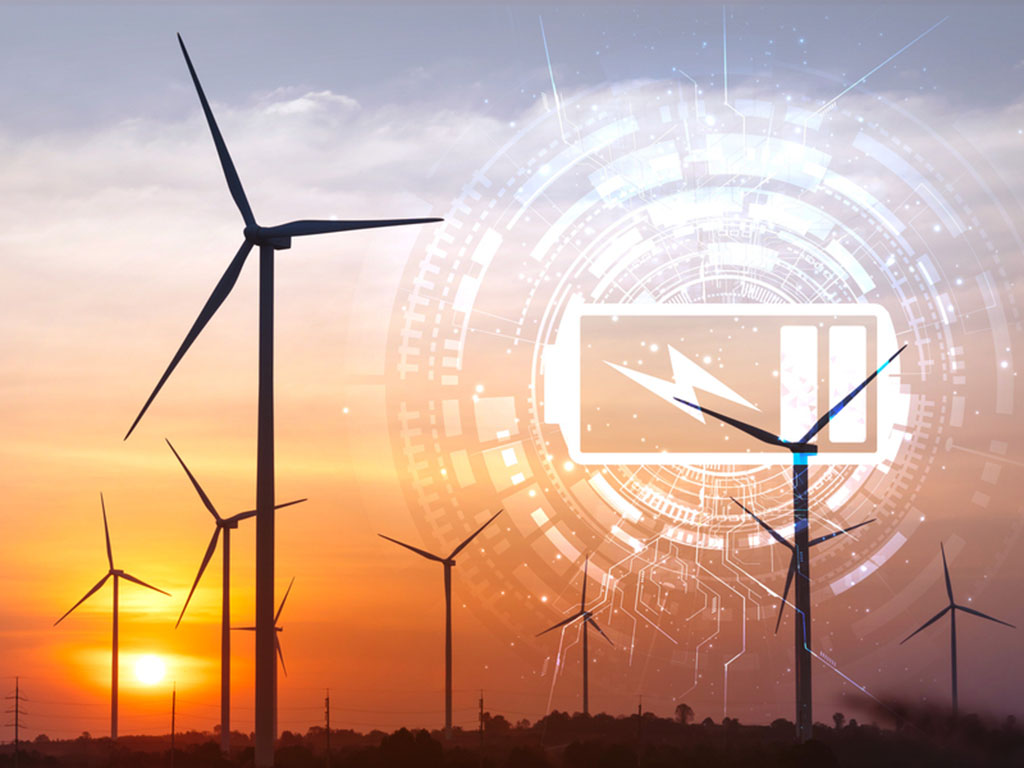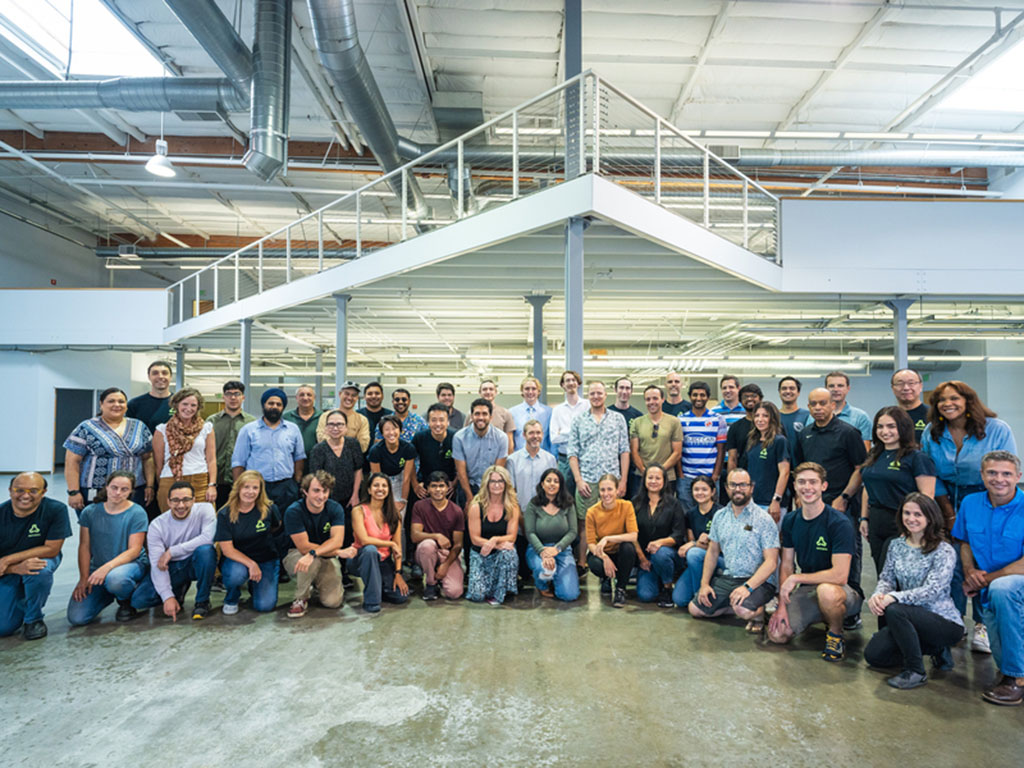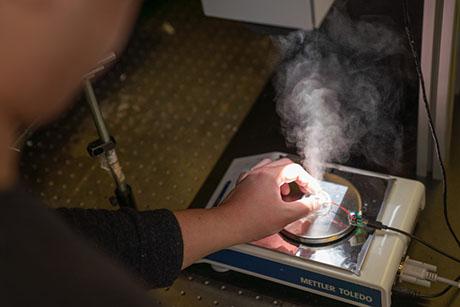Alumnus’ thermal battery helps industry eliminate fossil fuels
The explosion of renewable energy projects around the globe is leading to a saturation problem. As more renewable power contributes to the grid, the value of electricity is plummeting during the times of day when wind and solar hit peak productivity. The problem is limiting renewable energy investments in some of the sunniest and windiest places in the world.
Now Antora Energy, co-founded by David Bierman SM ’14, PhD ’17, is addressing the intermittent nature of wind and solar with a low-cost, highly efficient thermal battery that stores electricity as heat to allow manufacturers and other energy-hungry businesses to eliminate their use of fossil fuels.
 Antora Energy is addressing the intermittent nature of wind and solar with a low-cost, highly efficient thermal battery that stores electricity as heat to allow manufacturers and other energy-hungry businesses to eliminate their use of fossil fuels.
Antora Energy is addressing the intermittent nature of wind and solar with a low-cost, highly efficient thermal battery that stores electricity as heat to allow manufacturers and other energy-hungry businesses to eliminate their use of fossil fuels.Antora’s battery could dramatically expand the application of renewable energy by enabling its use in industry, a sector of the U.S. economy that accounted for nearly a quarter of all greenhouse gas emissions in 2021.
Antora says it is able to deliver on the long-sought promise of heat-to-power TPV technology because it has achieved new levels of efficiency and scalability with its cells. Earlier this year, Antora opened a new manufacturing facility that will be capable of producing 2 megawatts of its TPV cells each year — which the company says makes it the largest TPV production facility in the world.
Antora’s thermal battery manufacturing facilities and demonstration unit are located in sun-soaked California, where renewables make up close to a third of all electricity. But Antora’s team says its technology holds promise in other regions as increasingly large renewable projects connect to grids across the globe.
“We see places today [with high renewables] as a sign of where things are going,” Bierman says. “If you look at the tailwinds we have in the renewable industry, there’s a sense of inevitability about solar and wind, which will need to be deployed at incredible scales to avoid a climate catastrophe. We’ll see terawatts and terawatts of new additions of these renewables, so what you see today in California or Texas or Kansas, with significant periods of renewable overproduction, is just the tip of the iceberg.”
Bierman has been working on thermal energy storage and thermophotovoltaics since his time at MIT, and Antora’s ties to MIT are especially strong because its progress is the result of two MIT startups becoming one.
Alumni join forces
Bierman did his masters and doctoral work in MIT’s Department of Mechanical Engineering, where he worked on solid-state solar thermal energy conversion systems. In 2016, while taking course 15.366 (Climate and Energy Ventures), he met Jordan Kearns SM ’17, then a graduate student in the Technology and Policy Program and the Department of Nuclear Science and Engineering. The two were studying renewable energy when they began to think about the intermittent nature of wind and solar as an opportunity rather than a problem.
“There are already places in the U.S. where we have more wind and solar at times than we know what to do with,” Kearns says. “That is an opportunity for not only emissions reductions but also for reducing energy costs. What’s the application? I don’t think the overproduction of energy was being talked about as much as the intermittency problem.”
Kearns did research through the MIT Energy Initiative and the researchers received support from MIT’s Venture Mentoring Service and the MIT Sandbox Innovation Fund to further explore ways to capitalize on fluctuating power prices.
Kearns officially founded a company called Medley Thermal in 2017 to help companies that use natural gas switch to energy produced by renewables when the price was right. To accomplish that, he combined an off-the-shelf electric boiler with novel control software so the companies could switch energy sources seamlessly from fossil fuel to electricity at especially windy or sunny times. Medley went on to become a finalist for the MIT Clean Energy Prize, and Kearns wanted Bierman to join him as a co-founder, but Bierman had received a fellowship to commercialize a thermal energy storage solution and decided to pursue that after graduation.
The split ended up working out for both alumni. In the ensuing years, Kearns led Medley Thermal through a number of projects in which gradually larger companies switched from relying on natural gas or propane sources to renewable electricity from the grid. The work culminated in an installment at the Jay Peak resort in Vermont that Kearns says is one of the largest projects in the U.S. using renewable energy to produce heat. The project is expected to reduce about 2,500 tons of carbon dioxide per year.
Bierman, meanwhile, further developed a thermal energy storage solution for industrial decarbonization, which works by using renewable electricity to heat blocks of carbon, which are stored in insulation to retain energy for long periods of time. The heat from those blocks can then be used to deliver electricity or heat to customers, at temperatures that can exceed 1,500 C. When Antora raised a $50 million Series A funding round last year, Bierman asked Kearns if he could buy out Medley’s team, and the researchers finally became co-workers.
“Antora and Medley Thermal have a similar value prop: There’s low-cost electricity, and we want to connect that to the industrial sector,” Kearns explains. “But whereas Medley used renewables on an as-available basis, and then when the winds stop we went back to burning fossil fuel with a boiler, Antora has a thermal battery that takes in the electricity, converts it to heat, but also stores it as heat so even when the wind stops blowing we have a reservoir of heat that we can continue to pull from to make steam or power or whatever the facility needs. So, we can now further reduce energy costs by offsetting more fuel and offer a 100 percent clean energy solution.”
United we scale
Today, Kearns runs the project development arm of Antora.
“There are other, much larger projects in the pipeline,” Kearns says. “The Jay Peak project is about 3 megawatts of power, but some of the ones we’re working on now are 30, 60 megawatt projects. Those are more industrial focused, and they’re located in places where we have a strong industrial base and an abundance of renewables, everywhere from Texas to Kansas to the Dakotas — that heart of the country that our team lovingly calls the Wind Belt.”
Antora’s future projects will be with companies in the chemicals, mining, food and beverage, and oil and gas industries. Some of those projects are expected to come online as early as 2025.
The company’s scaling strategy is centered on the inexpensive production process for its batteries.
“We constantly ask ourselves, ‘What is the best product we can make here?’” Bierman says. “We landed on a compact, containerized, modular system that gets shipped to sites and is easily integrated into industrial processes. It means we don’t have huge construction projects, timelines, and budget overruns. Instead, it’s all about scaling up the factory that builds these thermal batteries and just churning them out.”
It was a winding journey for Kearns and Bierman, but they now believe they’re positioned to help huge companies become carbon-free while promoting the growth of the solar and wind industries.
“The more I dig into this, the more shocked I am at how important a piece of the decarbonization puzzle this is today,” Bierman says. “The need has become super real since we first started talking about this in 2016. The economic opportunity has grown, but more importantly the awareness from industries that they need to decarbonize is totally different. Antora can help with that, so we’re scaling up as rapidly as possible to meet the demand we see in the market.”



